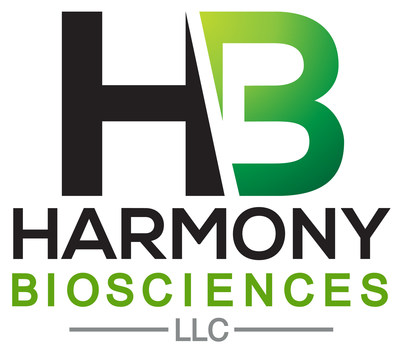Harmony Biosciences, LLC (Harmony) announced today that data from two clinical studies evaluating the long-term safety and efficacy, as well as the human abuse potential of WAKIX® (pitolisant), have been published in SLEEP
|
PLYMOUTH MEETING, Pa., Nov. 20, 2019 /PRNewswire/ -- Harmony Biosciences LLC (Harmony) announced today that data from two clinical studies evaluating the long-term safety and efficacy, as well as the human abuse potential of WAKIX® (pitolisant), have been published in SLEEP. WAKIX is a first-in-class medication with a novel mechanism of action and is approved for the treatment of excessive daytime sleepiness (EDS) in adult patients with narcolepsy. It is the first and only U.S. Food and Drug Administration (FDA) approved product for patients with narcolepsy that is not scheduled as a controlled substance by the U.S. Drug Enforcement Administration (DEA).
The manuscripts published in SLEEP are as follows:
"We are pleased to see these data, which support the benefit/risk profile of WAKIX, published in SLEEP," said Harmony's Chief Medical Officer, Jeffrey Dayno, M.D. "These publications will provide healthcare professionals additional scientific evidence in support of WAKIX, including information on long-term safety and efficacy, as well as data on its lack of abuse potential, both of which are important considerations when treating people who live with narcolepsy." Data from both studies were also presented at the recent World Sleep 2019 meeting in Vancouver, Canada. About WAKIX (pitolisant) INDICATIONS AND USAGE IMPORTANT SAFETY INFORMATION Contraindications Warnings and Precautions The risk of QT prolongation may be greater in patients with hepatic or renal impairment due to higher concentrations of pitolisant; monitor these patients for increased QTc. Dosage modification is recommended in patients with moderate hepatic impairment and moderate or severe renal impairment (see full prescribing information). WAKIX is not recommended in patients with end-stage renal disease (ESRD). Adverse Reactions Drug Interactions Concomitant use of WAKIX with strong CYP3A4 inducers decreases exposure of pitolisant by 50%. Dosage adjustments may be required (see full prescribing information). H1 receptor antagonists that cross the blood-brain barrier may reduce the effectiveness of WAKIX. Patients should avoid centrally acting H1 receptor antagonists. WAKIX is a borderline/weak inducer of CYP3A4. Therefore, reduced effectiveness of sensitive CYP3A4 substrates may occur when used concomitantly with WAKIX. The effectiveness of hormonal contraceptives may be reduced when used with WAKIX and effectiveness may be reduced for 21 days after discontinuation of therapy. Use in Specific Populations There is a pregnancy exposure registry that monitors pregnancy outcomes in women who are exposed to WAKIX during pregnancy. Patients should be encouraged to enroll in the WAKIX pregnancy registry if they become pregnant. To enroll or obtain information from the registry, patients can call 1 800-833-7460. The safety and effectiveness of WAKIX have not been established in patients less than 18 years of age. WAKIX is extensively metabolized by the liver. WAKIX is contraindicated in patients with severe hepatic impairment. Dosage adjustment is required in patients with moderate hepatic impairment. WAKIX is not recommended in patients with end-stage renal disease. Dosage adjustment of WAKIX is recommended in patients with moderate or severe renal impairment. Dosage reduction is recommended in patients known to be poor CYP2D6 metabolizers; these patients have higher concentrations of WAKIX than normal CYP2D6 metabolizers. Please see the Full Prescribing Information for WAKIX for more information. To report suspected adverse reactions, contact Harmony Biosciences, LLC at 1-800-833-7460 or FDA at 1-800-FDA-1088 or www.fda.gov/medwatch. About Narcolepsy Harmony Biosciences, LLC Harmony Biosciences, LLC Media Contact: Nancy Leone Sara Baker
SOURCE Harmony Biosciences, LLC |





